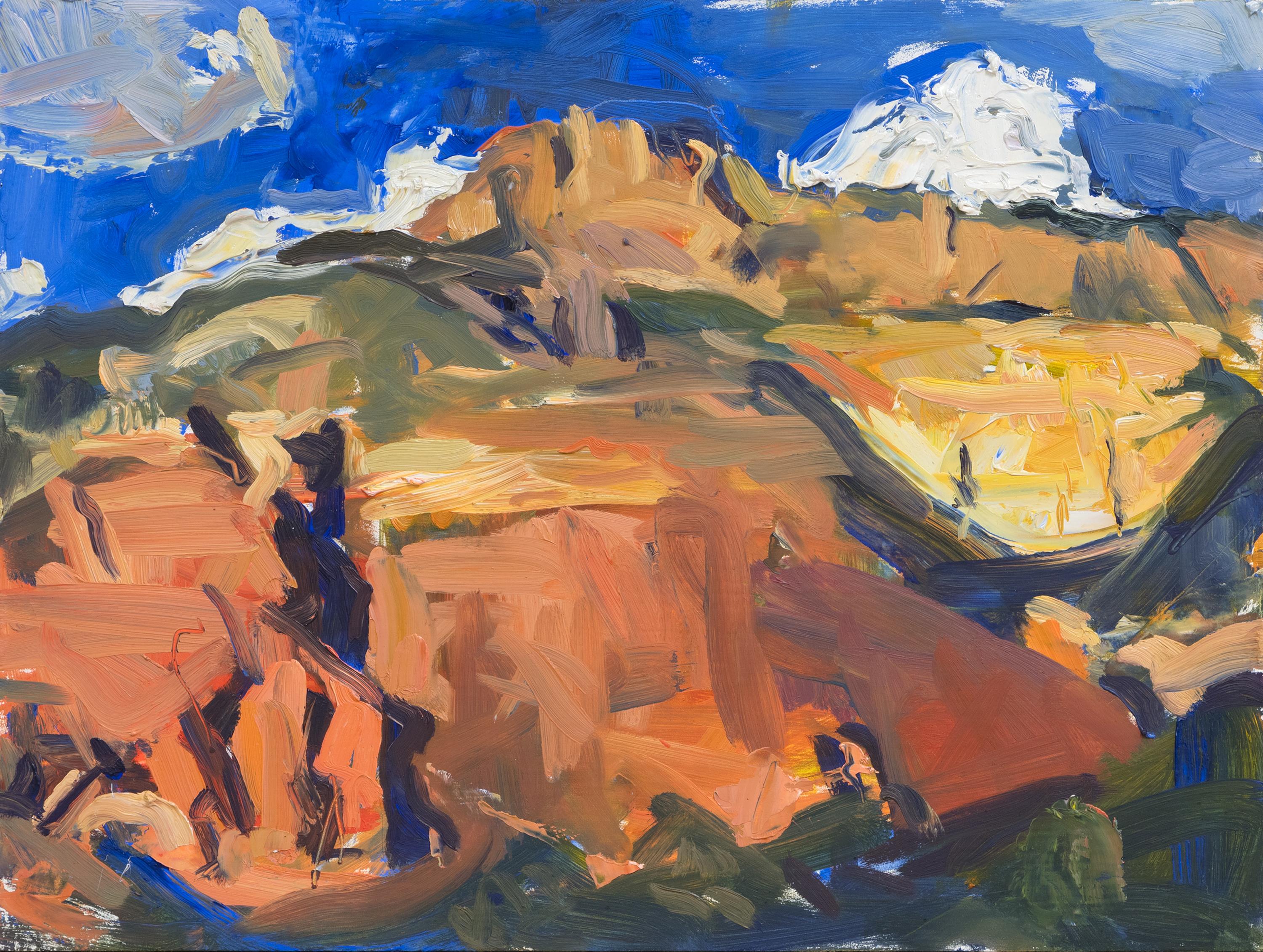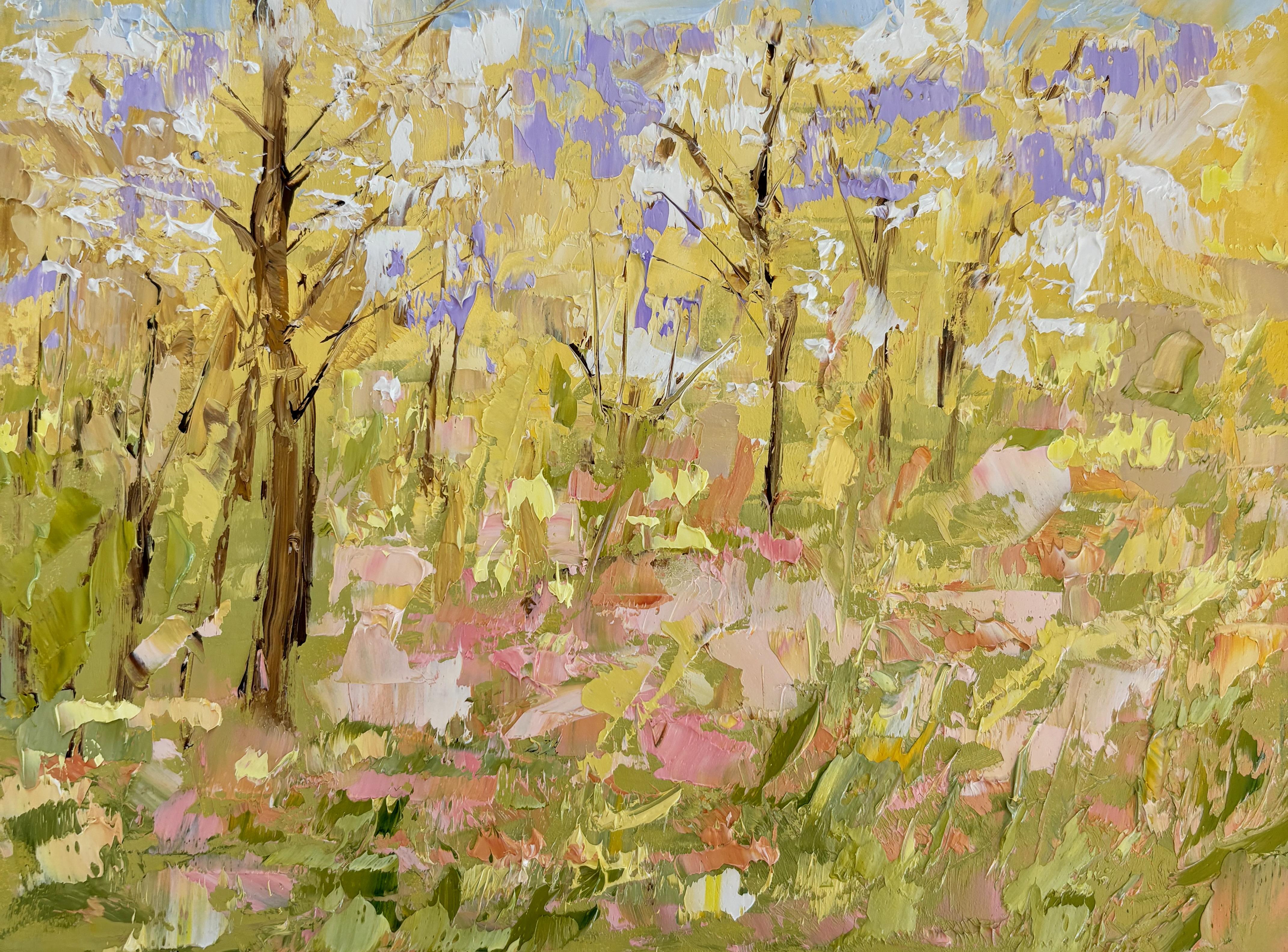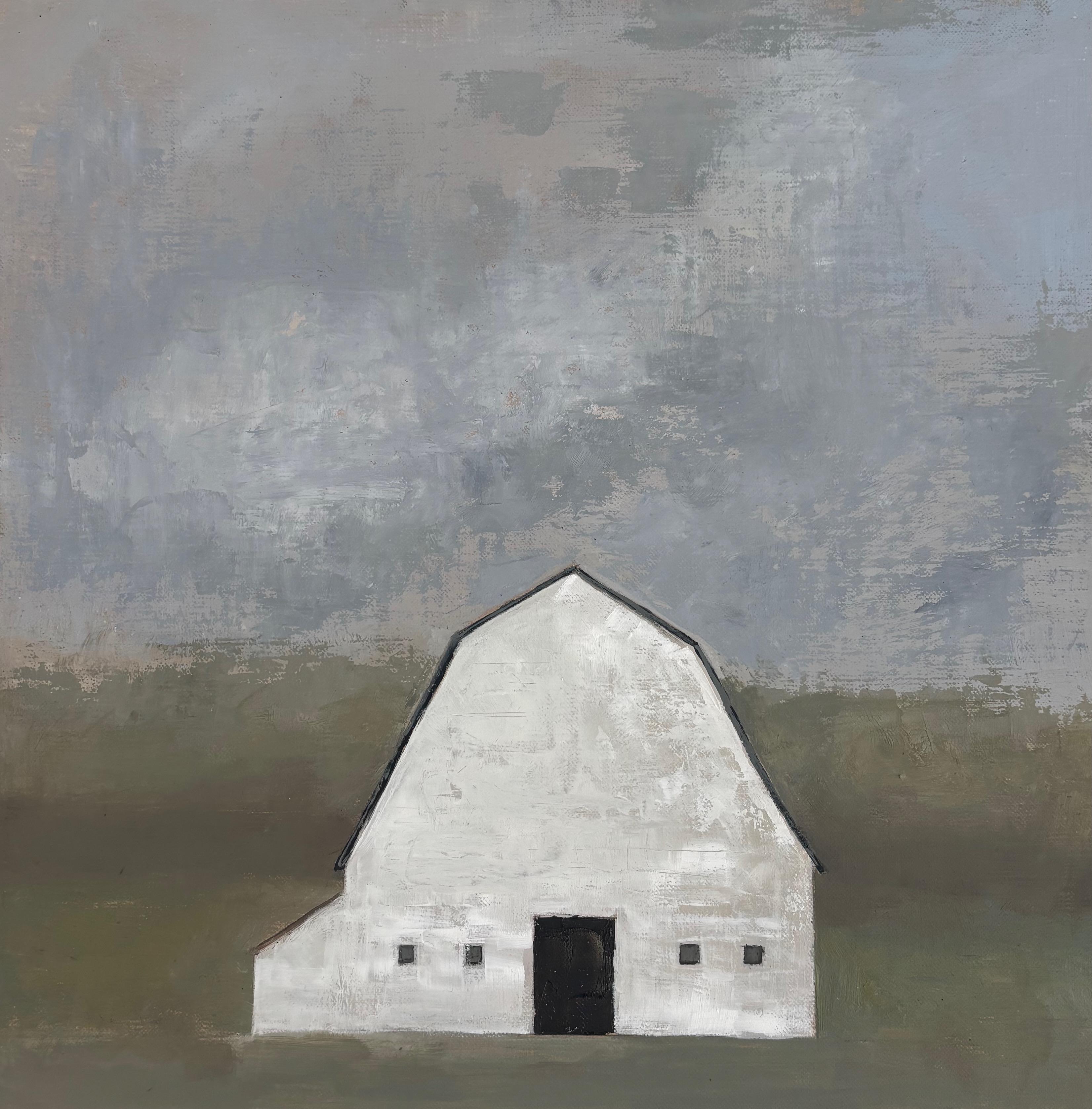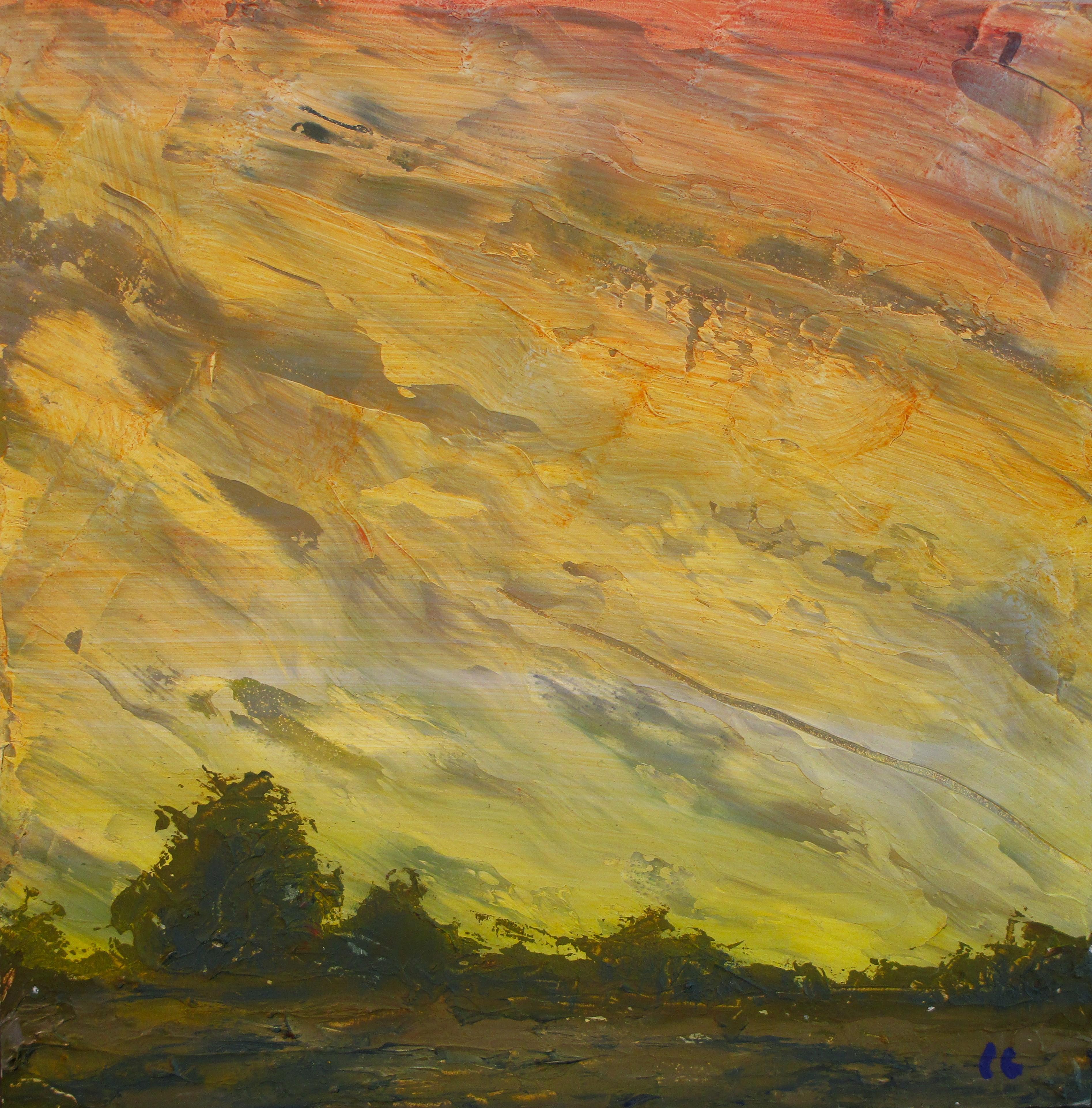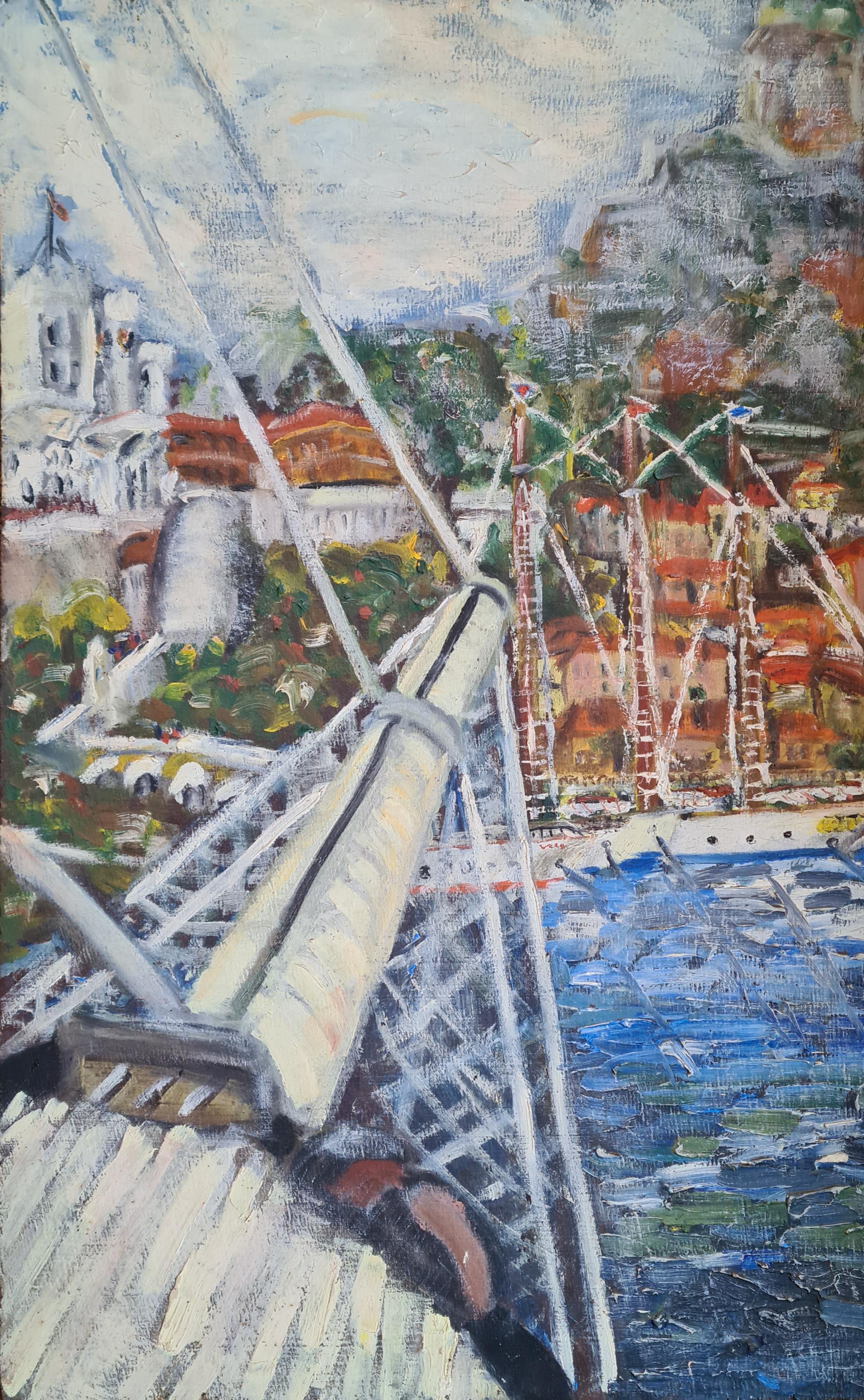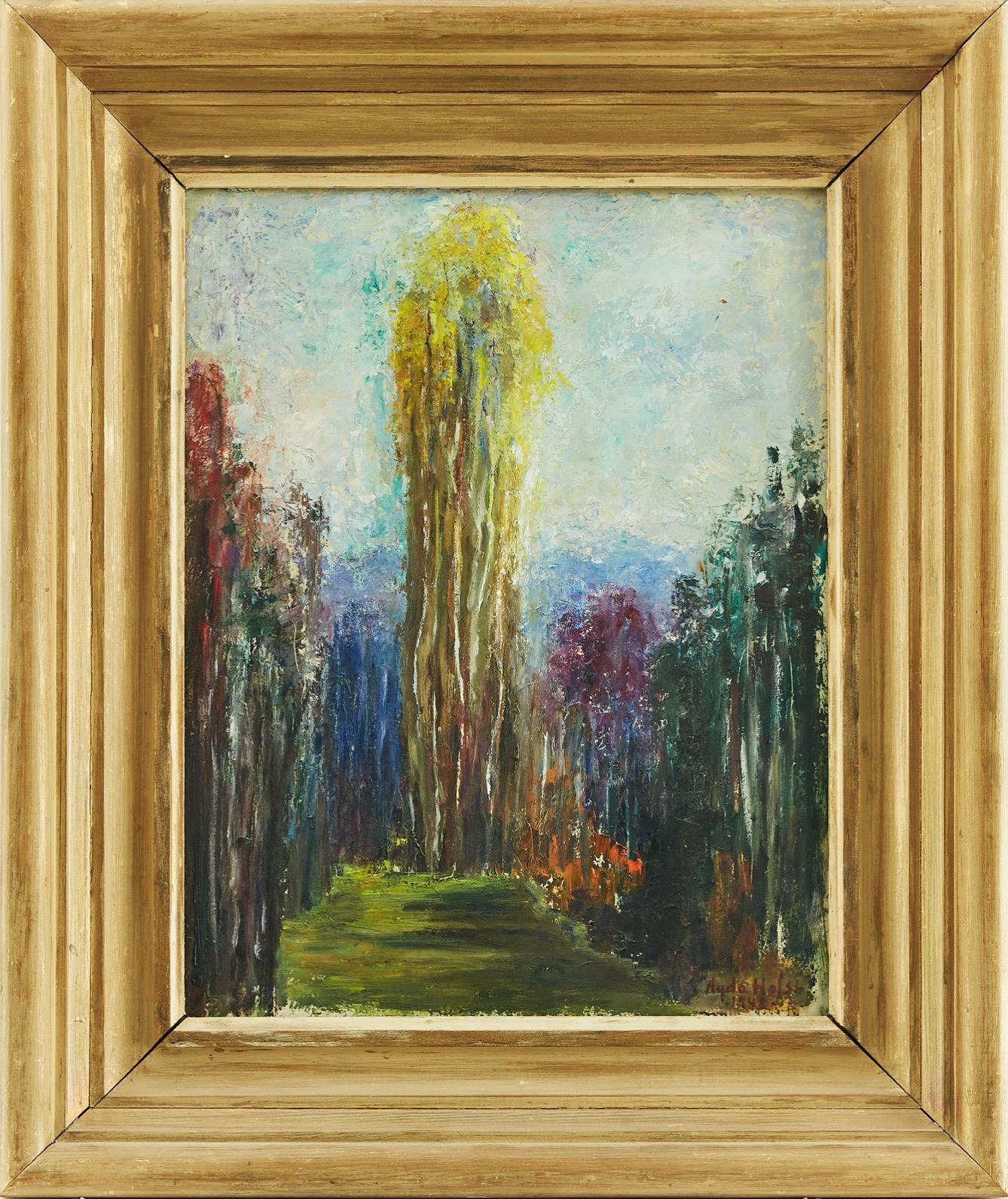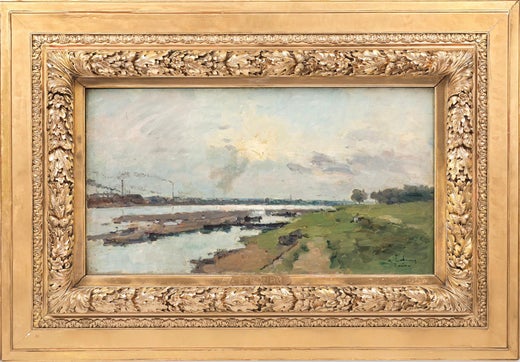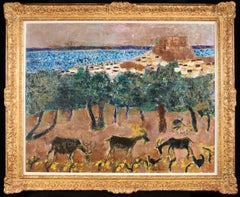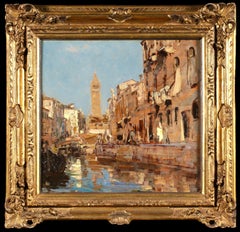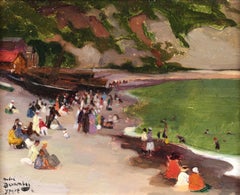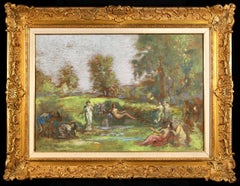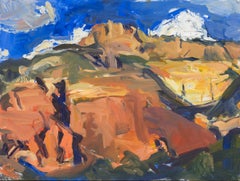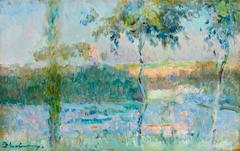
Spring on River Seine
View Similar Items
Albert LebourgSpring on River Seine1895
1895
About the Item
- Creator:Albert Lebourg (1849 - 1928, French)
- Creation Year:1895
- Dimensions:Height: 8 in (20.32 cm)Width: 12 in (30.48 cm)
- Medium:
- Movement & Style:
- Period:
- Condition:
- Gallery Location:Marlow, GB
- Reference Number:Seller: LFA0428BF1stDibs: LU41531828083
Albert Lebourg
Albert Lebourg was an Impressionist and landscape painter. He was born in Montfort-sur-Risle and he initially studied at Évreux Lycée. Lebourg entered the École des Beaux-Arts of Rouen at a young age, also studying at L'Academie de Peinture et de Dessins in Rouen. Afterward, the artist was briefly a student of Jean-Paul Laurens.
In 1876, Lebourg exhibited his works for the first time together with Claude Monet, Alfred Sisley, Pierre-Auguste Renoir, and other artists on the Boulevard Montmartre. Lebourg also taught drawing for five years at the École supérieure des beaux-arts in Algiers. In 1878, he returned to France and studied with Jean-Paul Laurens; he exhibited with the Impressionists in 1879 and 1880, and at the Salon from 1883 to 1895. Lebourg painted mainly in Auvergne, in Normandy, and along the banks of the Seine; he also traveled to England in 1900, Switzerland in 1902, and Belgium in 1907.
While Lebourg’s works show the influence of the Impressionists, they are imbued with a strong sense of structure and design, apparent even in his most atmospheric scenes. His pictures were very popular with his contemporaries, and several solo exhibitions were held in Paris during his lifetime. In the fourth Impressionist exhibition of 1879 Lebourg exhibited 30 works with Claude Monet, Camille Pissarro and Edgar Degas, presenting paintings and drawings executed in Algiers.
In the fifth Impressionist exhibition of 1880 Lebourg exhibited 20 works depicting Rouen, Paris and Algiers. In 1883 he was admitted to the Salon (Paris) with his work entitled Matinée à Dieppe. In 1887 he exhibited at the acclaimed Les XX exhibition, with Walter Sickert, Camille Pissarro, Berthe Morisot and Georges-Pierre Seurat, with Seurat and Signac present at the opening.
Lebourg painted in all four seasons, animated scenes of the Seine in and near Rouen and Paris. He painted in Auvergne, Normandy and Île-de-France, finally settling in Puteaux where he remained from 1888 to 1895, availing himself of the surroundings of Paris, painting what he would regard as his best works.
"I will paint often at the banks of the Seine: Nanterre, Rueil, Chatou, Bougival, Port-Marly,” wrote Lebourg at the time. “These are a source of themes and very beautiful landscapes.”
Lebourg became a member of the Société des Artistes Français beginning in 1893. He moved to the Netherlands in 1895, where he would stay two years. Lebourg exhibited to great acclaim at the Mancini Gallery in Paris and won the silver medal at the “Exposition Universelle” (1900). In 1903 a retrospective exhibition was organized presenting 111 works at the Galerie Rosenberg, the art gallery of Paul Rosenberg at 21 rue de la Boétie in Paris. While his fame was firmly established by 1910, he continued exhibiting annually at the Salon. In 1918 another retrospective was organized in Paris.
At the home of Impressionist art collector François Depeaux (1853–1920), Lebourg had the opportunity to converse many times with Camille Pissarro, Claude Monet, and Robert Antoine Pinchon (an artist who greatly admired him).
In November of 1909, the Musée des Beaux-Arts de Rouen opened a show with 52 paintings: thirteen by Lebourg, three by Monet, nine by Sisley, one by Renoir, three by Armand Guillaumin, five by Joseph Delattre, two by Charles Frechon and four by Robert Antoine Pinchon. In 1918, in the same museum, Lebourg was represented along with Bonnard, Boudin, Camoin, Cross, Guillaumin, Luce, Matisse, Monet, Signac and Vuillard and Pinchon.
The artist suffered a stroke in September of 1920 that paralyzed the left side of his body. He nevertheless remarried in February of 1921. A catalogue raisonné was organized that year that included 2,137 works and was released in 1923. It garnered united praise by the press.
Lebourg was named Chevalier of the Legion of Honour on June 27th, 1903, and breveted Officer of the Legion of Honour on April 22nd, 1924. He died in Rouen on January 7th, 1928. Lebourg's works are exhibited at the Musée d’Orsay, Petit-Palais, Musée du Jeu de Paume and Carnavalet in Paris, as well as museums in Bayonne, Clermont-Ferrand, Le Havre, Dunkerque, Lille, Strasbourg, Sceaux and above all Rouen at the Musée des Beaux-Arts de Rouen (François Depeaux collection).
Internationally Lebourg’s work is represented in several museums, including the Art Institute of Chicago, the Hermitage Museum in St. Petersburg, and the National Museum of Western Art in Tokyo.
Find original Albert Lebourg paintings on 1stDibs.
(Biography provided by La Galerie Cotignac)
More From This Seller
View All1960s Expressionist Animal Paintings
Canvas, Oil
1920s Impressionist Landscape Paintings
Oil, Panel
Early 20th Century Impressionist Figurative Paintings
Panel, Oil
Early 20th Century Symbolist Figurative Paintings
Oil, Panel
Early 1900s Impressionist Landscape Paintings
Oil, Panel
1860s Barbizon School Landscape Paintings
Oil, Panel
You May Also Like
21st Century and Contemporary Expressionist Figurative Paintings
Resin, Chalk, Oil, Wood Panel, Graphite
21st Century and Contemporary Expressionist Landscape Paintings
Resin, Chalk, Oil, Wood Panel, Graphite
2010s Expressionist Landscape Paintings
Encaustic, Oil, Panel
Late 20th Century Expressionist Landscape Paintings
Oil, Panel
2010s Expressionist Landscape Paintings
Linen, Oil, Panel
2010s Expressionist Landscape Paintings
Linen, Oil, Panel
